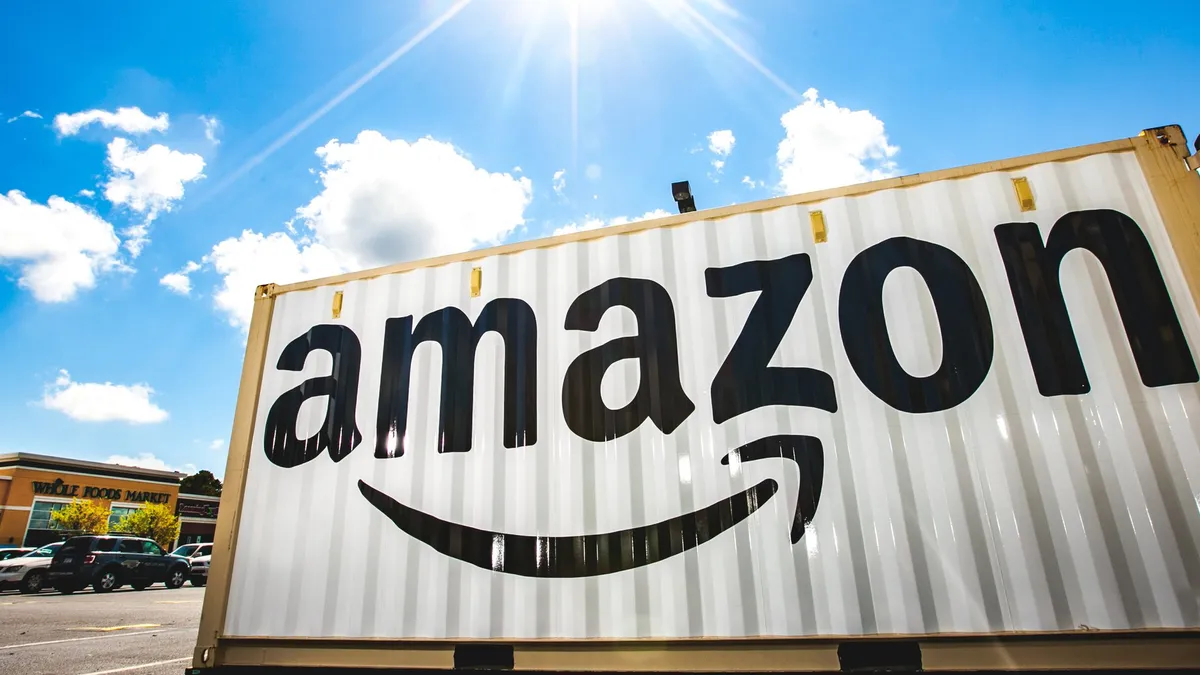UPDATE: March 12, 2019: In a second notice that went out to vendors several days after the first, Amazon said ordering from their accounts had resumed following a "temporary pause," according to a report from Digiday. Vendors were also encouraged to enroll in Brand Registry, a program for authorized sellers. Going forward, Amazon will only offer automatic purchase-order fulfillment to those enrolled in Brand Registry, an apparent move to weed out those selling products without authorization.
UPDATE: March 7, 2019: Amazon provided the following statement from a spokesperson about the removed vendors: "We regularly review our selling partner relationships and may make changes when we see an opportunity to provide customers with improved selection, value and convenience."
Dive Brief:
- Amazon reportedly removed thousands of vendors this week from its platform by terminating their purchase orders, according to a Digiday report.
- The vendors share similar characteristics. They have $10 million or less in sales volume on Amazon per year and don't have assigned vendor managers at the company. Many also specialize in "oversized goods," which cost more to ship.
- Vendors initially received automated responses indicating that not renewing their purchase orders was a technical glitch. But, Amazon later sent messages to the vendors saying that it had determined their businesses would perform better as third-party sellers on its marketplace and that the move was permanent.
Dive Insight:
Amazon said the removal of vendors is part of its efforts to provide shoppers with "improved selection, value and convenience." The move is also the latest indication that Amazon is seeking more control of how companies sell on its platform and how it works with brands. The company reportedly has a combined supplier platform, called Amazon One Vendor, in the works that joins first-party and third-party sellers into one system, according to Digiday. Amazon would decide whether a supplier would be best suited to sell as a third-party, first-party or both.
Amazon has also been ramping up its Amazon Exclusives program, deals that give the company a small percentage of sales for exclusive distribution. The exclusive partnerships outnumber Amazon's private label offerings across most product categories, according to Gartner L2 research. At the end of 2018, the company had 119 private labels and 223 brand partners in Amazon Exclusives, with grocery and gourmet, health care and beauty, and household goods as the leading categories.
Recently, Amazon has been placing more restrictions on third-party sellers. Last year, it struck a deal with Apple to expand the selection of products coming directly from Apple on its site and feature Apple's latest devices. Many Apple products either weren't available on Amazon or only available through the third-party marketplace at varying prices or conditions. The new deal only allows Apple-authorized resellers to sell Apple and Beats products on the marketplace.
Many vendors have favored selling via Amazon's third-party marketplace, which is growing faster than Amazon's retail business, per Digiday. Sellers were able to set their own prices to avoid pricing wars and undercutting, but Amazon recently introduced a maximum retail price for every product and has launched other controls over third-party sellers.
Amazon's net sales grew 29% to $56.6 billion for Q3 2018. But, the sales were slightly lower than expected, which is "slightly worrying," GlobalData Retail Managing Director Neil Saunders said in comments emailed to Retail Dive. The slowdown was attributed to consumers being less likely to shop at Amazon in a good economy and its growing number of competitors. Fifty-three percent of goods sold on the site were from third-party sellers. Amazon's sales grew 20% in Q4, the lowest gain since 2015.













